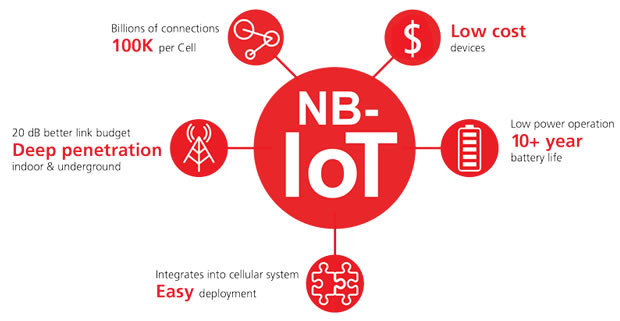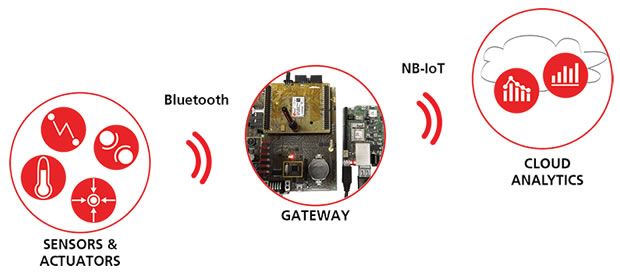The Connected Industry and the Internet of Things that Really Matter - Part III
While the options for short‑range indoor wireless connectivity for industrial applications have traditionally been many and varied, that hasn’t been the case for cellular, especially at the ultra‑low power levels required for IoT.
The emergence of LoRa over the past year has been interesting, but equally interesting is the new Narrowband IoT (NB‑IoT) standard, which developed by the 3GPP body for operation in the licensed GSM and LTE bands. NB‑IoT is aimed at indoor and outdoor applications requiring a combination of long battery life, deep coverage penetration and low cost (Figure 1 and 2).

Figure 1. Narrowband‑IoT promises indoor IoT coverage for GSM and LTE networks of up to 99.5% or higher, and with an ecosystem of support across key industrial applications.

Figure 2. In a recently presented industrial waste management solution use‑case demonstration, u‑blox showed how to combine NB‑IoT, Bluetooth low energy and WiFi technologies to gather information from waste bins, optimise the bin collection route, and apply sophisticated data analytics to illustrate key business benefits such reduced fuel consumption, reduced emissions and shorter journey times.
Traditional GSM and LTE networks can fulfil only 95-99% of outdoor coverage needs. However, cellular‑based IoT has higher coverage requirements, especially if it is to be used in critical applications and hard to reach locations. Specifically, the percentage for indoor coverage must be at least 99.5% or higher. 3GPP is working to addresses this issue through the enhancement of Power Spectrum Density (PSD) using narrowband technologies. The 16‑time retransmission mechanism and standalone and guard band spectrum planning modes increase the coverage gains of NB‑IoT by 20dB, when compared with those of GSM networks.
NB‑IoT operates at much lower power and data rates than cellular, yet will come with IoT‑level robustness and reliability. NB‑IoT is well suited for monitoring of gas and water meters via regular and small data transmissions. Other key application areas for NB‑IoT include street lighting control for smart cities, building automation, people tracking, and agricultural monitoring.
By Simon Glassman, Senior Principal Strategic Partnerships, u-blox and Mats Andersson, Senior Director Technology, Product Center Short Range Radio, u-blox.
Courtesy of u-blox.






